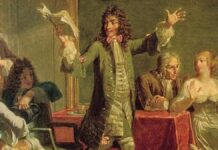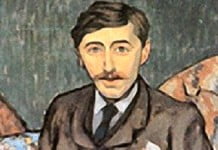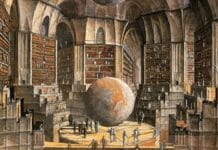T S Eliot said that genuine poetry can communicate before it is understood. Homer is perhaps the greatest of all epic poets and his legendary status was well established by the time of Classical Athens. The Greek poet Homer is credited with being the first to write down the epic stories of ‘The Iliad’ and ‘The Odyssey,’ and the impact of his tales continues to reverberate through Western culture. Homer was a singer and performer, therefore called a bard, some people believe that he was blind therefore referred to as the blind bard.
Homer was born to Telemachus and Epikaste, sometime between the 12th and 8th centuries BC, possibly somewhere on the coast of Asia Minor. Greek historian Herodotus (c. 484–425 BC), often called the father of history, placed Homer several centuries before himself, around 850 BC. It is said he died on the Island of Chios, and just like his unknown date of birth, his date of death is also unknown. Some scholars believe him to be one man; others think these iconic stories were created by a group. A variation on the group idea stems from the fact that storytelling was an oral tradition and Homer compiled the stories, then recited them to memory.
He is one of the most influential authors, for the two epics provided the basis of Greek education and culture throughout the Classical age and formed the backbone of humane education down to the time of the Roman Empire and the spread of Christianity. The Greeks regarded the great epics as something more than works of literature; they knew much of them by heart, and they valued them not only as a symbol of Hellenic unity and heroism but also as an ancient source of moral and even practical instruction.
Virtually every biographical aspect ascribed to Homer is derived entirely from his poems. Homer is thought to have been blind, based solely on a character in The Odyssey, a blind poet/minstrel called Demodokos. A long disquisition on how Demodokos was welcomed into a gathering and regaled the audience with music and epic tales of conflict and heroes to much praise has been interpreted as Homer’s hint as to what his own life was like. As a result, many busts and statues have been carved of Homer with thick curly hair and beard and sightless eyes.

Homer’s style falls more in the category of minstrel poet or balladeer, as opposed to a cultivated poet who is the product of a fervent literary moment, such as a Virgil or a Shakespeare. The stories have repetitive elements, almost like a chorus or refrain, which suggests a musical element. However, Homer’s works are designated as an epic rather than lyric poetry, which was originally recited with a lyre in hand, much in the same vein as spoken-word performances
The first printed editions of Homer were in 1488 CE in Florence by Chalcondyles of Athens. Homer’s work was hugely influential on Greek culture, and scenes from his works appeared in Greek sculpture, on Greek pottery, and in Greek tragedy and comedy. The poems were first compiled, organised, and edited under the Athenian Peisistratus, but the Greek text that we have survives from such Alexandrian scholars as Zenodotus and Aristophanes of Byzantium and Aristarchus and their comments on the texts. He was studied as part of Greek education, and the legends within his work would influence Hellenistic culture, Roman culture, and far beyond so that Homer’s lasting legacy is that his works are still studied to this day.
The Homeric epics are written in an artificial literary language or ‘Kunstsprache’ only used in epic hexameter poetry. Homeric Greek shows features of multiple regional Greek dialects and periods but is fundamentally based on Ionic Greek, in keeping with the tradition that Homer was from Ionia. Linguistic analysis suggests that the Iliad was composed slightly before the Odyssey and that Homeric formulae preserve older features than other parts of the poems.
The Homeric poems were composed in unrhymed dactylic hexameter; ancient Greek metre was quantity-based rather than stress-based. Homer frequently uses set phrases such as epithets (‘crafty Odysseus’, ‘rosy-fingered Dawn’, ‘owl-eyed Athena’, etc.), Homeric formulae (‘and then answered [him/her], Agamemnon, king of men’, ‘when the early-born rosy-fingered Dawn came to light’, ‘thus he/she spoke’), simile, type scenes, ring composition and repetition. For instance, the main words of a Homeric sentence are generally placed towards the beginning, whereas literate poets like Virgil or Milton use longer and more complicated syntactical structures. Homer then expands on these ideas in subsequent clauses; this technique is called parataxis.
Ring composition’ or chiastic structure (when a phrase or idea is repeated at both the beginning and end of a story, or a series of such ideas first appears in the order A, B, C … before being reversed as … C, B, A) has been observed in the Homeric epics. Opinion differs as to whether these occurrences are a conscious artistic device, a mnemonic aid or a spontaneous feature of human storytelling. Both of the Homeric poems begin with an invocation to the Muse. In the Iliad, the poet invokes her to sing of “the anger of Achilles”, and, in the Odyssey, he asks her to sing of “the man of many ways”. A similar opening was later employed by Virgil in his Aeneid.





























